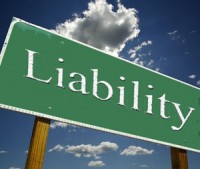
In re Parental Rights as to A.P.M. (Nev. Supreme Ct. – Sep. 10, 2015)
The issues are (1) whether the district court may terminate the parental rights of a parent who has completed a case plan for reunification and (2) whether the district court must wait the entire 20 months before applying both the presumption of token efforts in NRS 128.109(1)(a) and the presumption that termination of parental rights is in the best interest of the child in NRS 128.109(2).
Arli and his wife Abigail had three children together: J.M., A.P.M., and E.M.M. From July 2006 to November 2011, seven separate incidents occurred in which one of the three children swallowed foreign objects, such as coins, magnets, and batteries. All of these swallowing incidents happened while Arli was at work and Abigail was at home with the children. On the latest occasion, doctors had to surgically remove a large battery that was lodged in E.M.M.’s throat. Following E.M.M.’s surgery, the doctors grew concerned that Abigail was forcing her children to swallow foreign objects. The doctors explained that three-year-old E.M.M. swallowing the large battery was the equivalent of an adult swallowing a golf ball, making it highly unlikely that he swallowed it on his own. Due to their concerns, the doctors initiated a child protective services investigation.
In November 2011, the Clark County Department of Family Services (DFS) removed A.P.M. and E.M.M. from their parents’ home pursuant to NRS Chapter 432B. In July 2012, the juvenile court entered an order granting DFS legal custody of the children, and the children were placed in foster care. Arli and Abigail were issued case plans containing objectives for them to complete in order to regain custody of their children. Arli’s case plan required that he take parenting classes and participate in counseling. Almost immediately, Arli successfully completed the parenting classes and was participating in the required counseling. Despite these efforts, however, the juvenile court reviewed Arli’s and Abigail’s progress and determined that the children should remain in foster care.
Continue reading “When can a court terminate parental rights?”









